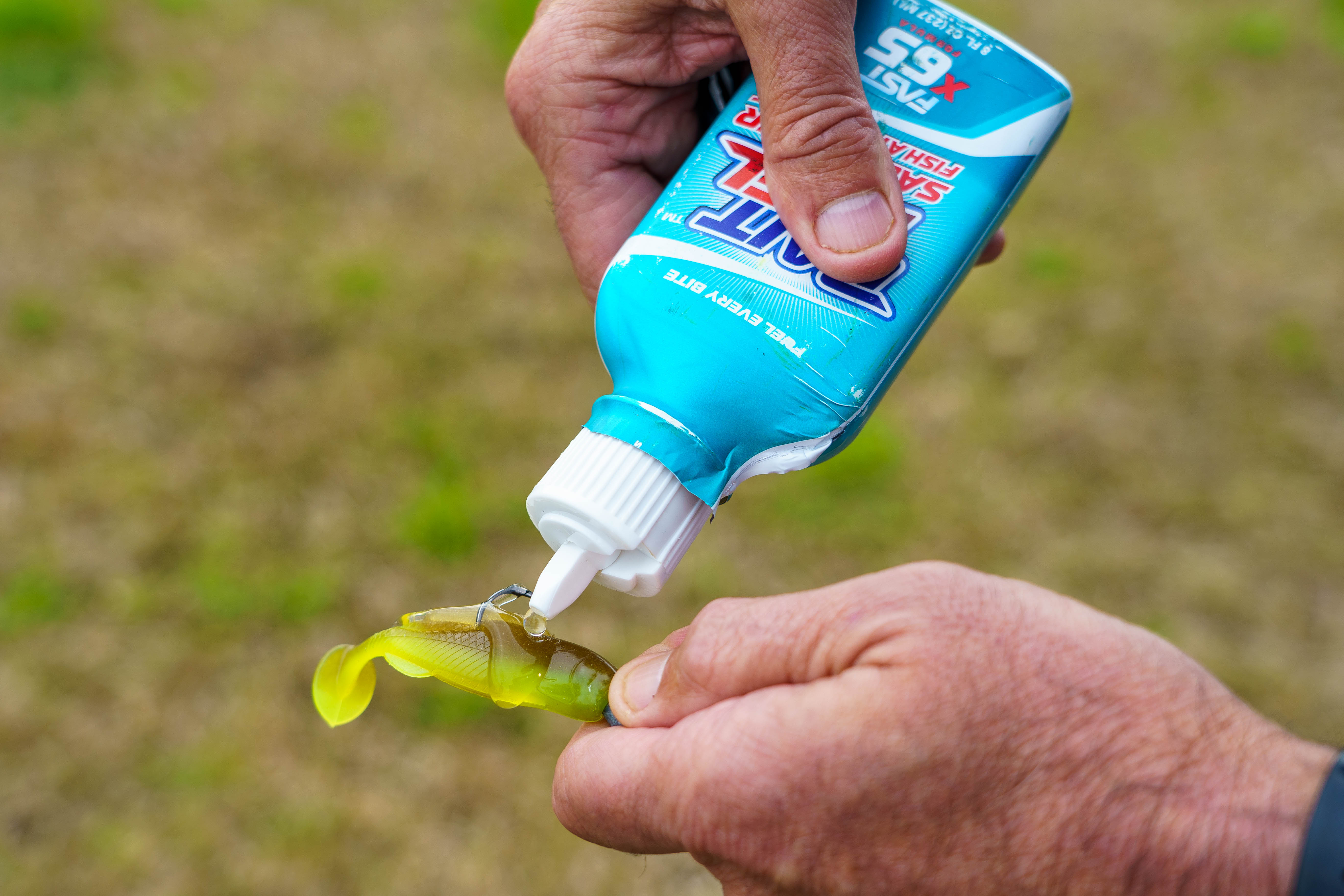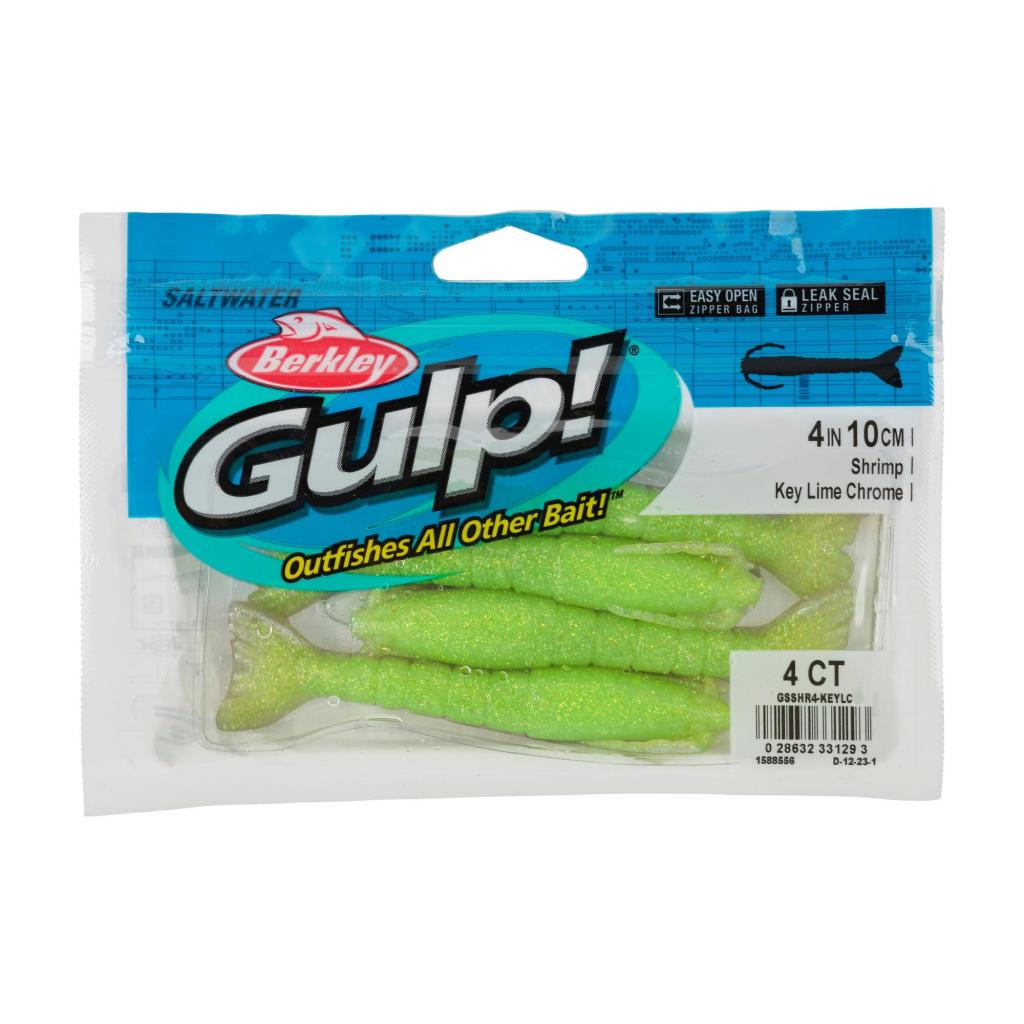
We can use the right-sized jig, choose the ideal trailer, match colors to water clarity and local forage, but still find the fish snubbing our presentations. For covering water and allowing quick changes in trailer size, shape, and styling, it’s hard to beat the old lead head and plastic technique — and that’s what makes rejection so frustrating.
Unfortunately, the fish don’t read the how-to manual, so they kinda do what they want to do. Maybe it’s a slower tide stage, maybe it’s sun angles, could be a weather thing, or perhaps fishing pressure has them seeing too many artificial baits. Whatever the cause, our best efforts sometimes fail to impress.
That’s a common vexation for inshore anglers seeking shallow water favorites like redfish, trout, snook, and flounder. But don’t be discouraged; you can often tempt those finicky fish by enhancing a key element of their feeding instinct — smell.
Scent additives come in gel, paste, and spray forms, each with a unique formula blended to mimic shrimp, crabs, or saltwater baitfish. Popular brands include Berkley Gulp!, Pro-Cure, Bait Fuel, Fish Sticks, and Dr. Juice. Each of these will increase a soft bait’s fish attraction, while brands like Z-Man and Berkley also make soft baits impregnated with proprietary scent formulas.
(Scent attractants are used mostly with soft baits, but don’t hesitate to also apply them to your hard baits.)

When it helps
When the bite is on, especially with the gluttonous redfish, standard unscented plastics perform well. However, when scenarios or conditions find the fish in a lackadaisical mood, sending the smelly stuff can make magic happen.
Capt. Cody Chivas, who, along with Fred Myers III, won the 2023 Yamaha Bassmaster Redfish Cup Championship presented by Skeeter Boats at South Carolina’s Winyah Bay, favors a Berkley Gulp! Shrimp — either on a light jig head or hung beneath a popping cork. In his view, the fish’s sense of smell plays a critical role in tough situations.
“A Gulp! is the bait we’ll use when the fish are moving slower, or in a dirty water situation, and you need to get a bite,” Chivas said. “Anytime the redfish are not very active and wanting to eat, that’s when we’ll use scented baits.
“Like in the middle of winter when the fish really don’t want to eat much, we’ll use a Gulp! Shrimp or Gulp! Crab and set it on the bottom and barely move it. We call it ‘dead sticking;’ you’re watching a school of redfish and you’ll see them slowly come up to the bait and if you subtly twitch it, one will eat it.”
Capt. Ryan Rickard, who partnered with Bassmaster Elite Chris Zaldain to win the 2021 Redfish Cup Championship in Port Aransas, Texas takes a broader view, especially during competitive events.
“Anytime during a tournament, I’m using scent; anything you can get an advantage from — I’m a big fan of that,” Rickard said. “I like Pro Cure and there are a bunch of different scents in that brand, but it depends on where in the country I’m fishing because I like to match the scent to the forage I think the fish are eating.
“I tend to use the blue crab scent when I’m throwing a spoon because that bait looks like a little crab moving through the grass. When I’m throwing soft baits in the shrimp pattern, I’ll go with the shrimp scent. Then, I use the Inshore Saltwater formula when I’m throwing swimbaits and paddle tails.”
During last fall’s Redfish Cup Championship, Elite Scott Canterbury partnered with Capt. Krista Miller, and both discussed scent strategies. Canterbury uses Bait Fuel for all of his soft plastic presentations, but he’s become a big fan of the saltwater formula, which he’s found to be a real head-turner.
Miller, a Berkley Gulp! devotee, threw a lot of those scented shrimp in that muddy South Carolina water. She also offered a tip that’ll boost (non-tournament) efforts.
“I use a lot of fresh-dead (non-frozen) shrimp at home (in the Florida Panhandle) and I’ll soak them in the liquid that the Gulp! baits are packaged in,” Miller said. “When the water’s a little murkier and the fish can’t see as well, I’ll do that so they can find the bait.”
Rickard offers this tip: “Every 15 casts or so, I’ll reapply (the Pro Cure scent). If the bite is really off the chain, I might reapply every 25-30 casts.
“A lot of the (soft) baits I use have little holes, so I use an injector and inject the scent into the holes so it will stay in there a little longer. With a spoon or hard bait, you just put strips of scent on it.”

A little bonus
One of the most effective ways to increase the appeal of a jig and plastic body is to tip the hook point with a small piece of shrimp. Cut the shrimp into small chunks no larger than a dime and stick it onto your hook point. (For maximum hold, try to keep the shrimp’s shell intact and stick the hook point through part of this exoskeleton.)
As your bait moves through the water, that cut shrimp will release fish-attracting scent. Also, when a redfish, snook, trout, or flounder bites your jig, that little pop of authentic flavor typically makes them hold on longer.
Tip: Don’t use the shrimp heads or tail pieces, as their mass can obstruct hook sets. Rather, save these pieces and toss them in the direction you’re fishing. These freebies will often attract attention from fish that might stick around long enough to spot your jig.
Frozen shrimp will work in a pinch, but consider how the thawing process tends to soften shrimp and diminish its durability. Often, a piece of softening shrimp will fly off the hook when you cast the bait, but even if it survives, it’s very easy for pinfish and other bait stealers to remove the sweetener. Unless you’re pretty sure you’ll get a bite quickly, stick with fresh shrimp.
Option: If you’re fishing with live baitfish like scaled sardines (aka “whitebait”) or threadfin herring (aka “greenbacks”), you’ll have a few that die in the livewell or those that expire on the hook. Collect these dead baits and chop them into small pieces for jig tipping.
Keep the pieces small and run your hook all the way through the baitfish chunk so the point remains exposed. Baitfish skin and scales present a much more durable barrier than a shrimp’s shell, so make sure you never impede hook penetration.
For neat, efficient shrimp or baitfish slicing, carry a small kitchen cutting board so you’re not making a mess by cutting the bait on your seat, deck, or the top of a tackle box. A piece of scrap lumber also fills this role.

Skip the scent
You might think that maximum scent could never present a downside, but that’s not accurate. Coastal regions hold multiple shark species, and while the larger adults typically hunt larger prey, juvenile blacktip, bonnethead, and lemon sharks eat a variety of smaller forage, including shrimp.
These predators are built with highly sensitive sniffers, and if they detect the scent of anything edible, they’ll come from long distances to secure a meal. To put it mildly, they don’t miss much and they absolutely will not stop once they pick up a scent trail.
A 2- to 3-foot shark doesn’t pose much harm, as long as you handle with extreme caution and use pliers to keep your fingers away from those teeth while dehooking. However, once the little ankle biters start swarming, you’ll waste a lot of time and possibly break off several baits.Best bet: Move down the line 100 yards or so and ditch the scent strategy.




